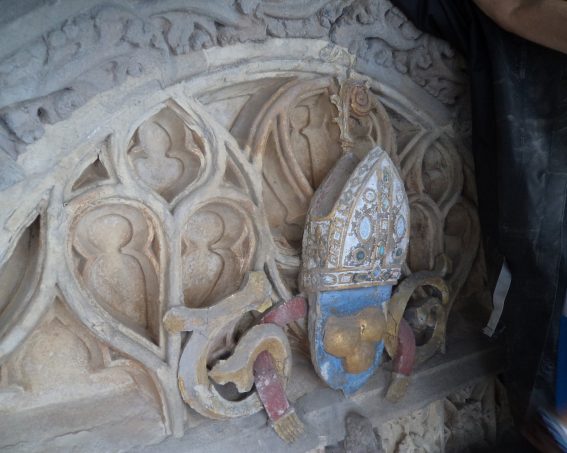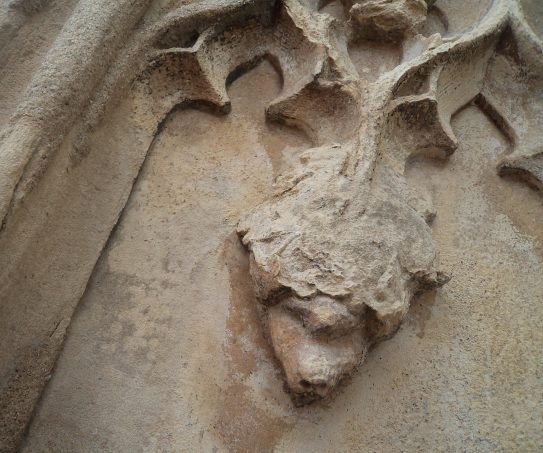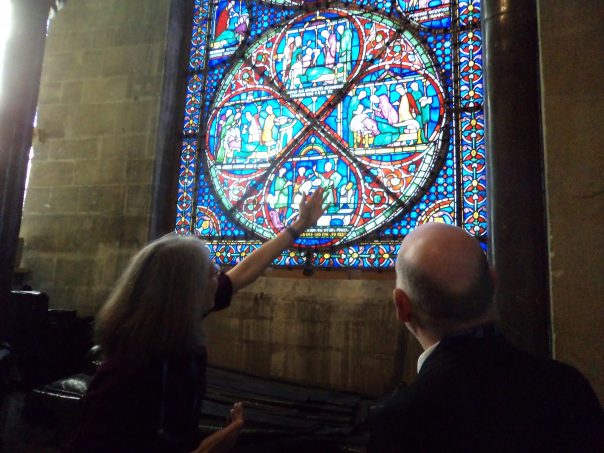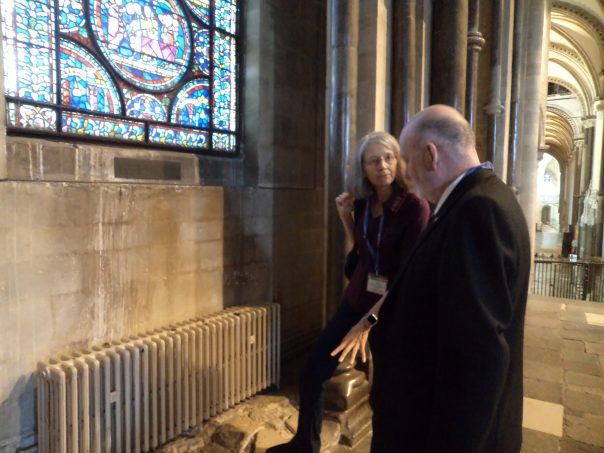A final notice for the University of Kent’s MEMS Fest where Peter Joyce, Kieron Hoyle and Jason Mazzocchi will be presenting their session on ‘Challenging Perceptions: Identity and Representation in Sixteenth-Century Kent’ on Saturday 14th June at 9am. This 2-day Festival has a host of exciting presentations and for the full programme, please see: https://memsfestival.wordpress.com/about/programme/ and for booking: https://memsfestival.wordpress.com/ . Unfortunately I won’t be able to stay for the afternoon sessions on Saturday because I’ll be giving a talk at Faversham for Faversham Charters & Magna Carta Anniversary Day: https://favershamcharters.org/events/ where at 2pm I’ll be speaking on ‘Living and Dying in Medieval Faversham’.
Then just a quick note as more next week on the Gender and Medieval Studies conference, 2nd to 5th July, at CCCU which is themed ‘Gender: Charity and Care’ https://medievalgender.co.uk/ and for bookings, please see: https://shop.canterbury.ac.uk/product-catalogue/faculty-of-arts-humanities/school-of-humanities This year the conference is followed on the Saturday by the ‘Canterbury Medieval Pageant’. Then on Sunday 6th July it will be the annual commemoration service of St Thomas More at St Dunstan’s church. The service begins at 7.30pm and this year the address will be given by Professor Robert Bartlett (Professor Emeritus at the University of St Andrew’s). There will be refreshments after the service and all are welcome to attend.

For this week, I want to report on two outreach activities that I have been involved in because they relate to each other. The common factors are Becket and pilgrimage and bring in the cathedral and its craftspeople – from medieval times to the present day. The first of these relates to a visit to Christ Church Gate and the second to the Trinity Chapel, in each case in the company of a specialist: Heather Newton, the cathedral’s Fabric Projects Manager and expert on the Gate, and Rachel Koopmans, the well-known historian who has been working in concert with Leonie Seliger for the Chapel. Even though chronologically the north side of the chapel with its late 12th-century Becket Miracle Windows should come first, for the purposes here the construction of Christ Church Gate in the decades before 1520 and Becket’s Jubilee is a convenient place to start.
Having visited this gate with Heather when the scaffolding was last in place as part of the Heritage Lottery ‘Canterbury Journey’ project, it was great Wednesday morning to visit again to see what Heather and the team are now doing and to learn about some of the conservation techniques they are applying to the lower sections of the gate. This is absolutely fascinating and should be known about far more extensively because it is exciting to learn information regarding the types of stone used (and remember at its heart this is a gate made of brick faced in stone), whether the carving was done in the workshop or on site, how has weathering and/or pollution affected the stone, what changes have taken place, how were Renaissance ideas and styles incorporated, how was heraldry used, which parts date from the 16th century, which are later, when, by whom and how, as well as how if at all in places do they relate or correspond to the original decoration/fabric.

To give but one brief example, Heather took me through the different types of stone and where they had been used, from the early 16th century Kentish ragstone plinth with the rest in Caen stone to the post First World War (1919) replacements in Doulting (from the Bath Stone beds), and the further far more extensive period of work in the 1930s, including replacement using stone from Rutland. Stone from France has again been important in the 21st century, but not Caen stone, although Heather says high quality Caen stone is still available, but rather À Grain stone from the Lavoux quarry near Poitiers. For the considerable work done in the early 20th century the architect was W. D. Caroe. As well as bringing in stone because the gate had become extremely badly damaged, in terms of the many lost detailed features, he did not believe the stone carvers of his time could match their medieval predecessors. As she pointed out, consequently he introduced a radical technique of using a sand, cement and powdered stone mix that was put into moulds to produce the ‘carved’ details, which were then attached to the gate using iron rods and fixings.
Musing on the wonders of this gate, it would seem highly desirable to provide this wealth of information, with colour illustrations, for all sorts of people – from locals to visitors and pilgrims. That way they could appreciate and connect to this craftsmanship over the centuries, seeing the meanings the gate holds as a marker of momentous events – from Becket’s Jubilee in the year of the Field of the Cloth of Gold to the installation of a new Archbishop of Canterbury (hopefully) this autumn.

Consequently, a book about Christ Church Gate would be a great addition to the two so far produced by Rachel Koopmans and Leonie Seliger on the Becket Miracle Windows. Moreover, Heather Newton, with her professional expertise as a stone mason, would be the ideal person to do it because she would be able to weave together details about the historic and current work on the gate, including drawing on Rupert Austin’s and Peter Seary’s (CAT) detailed archaeological survey, as well as social, political and religious ideas from works such as mine on late medieval pilgrimage in Canterbury and the (re-)introduction of the Becket Pageant as part of the city’s Marching Watch in the early 16th century.
Moreover, and thinking of the gate more specifically in pilgrimage terms, as well as its initial constructing marking what would be the last Jubilee, it seems worthwhile to see the gate as a portal marking the transition from city to cathedral, from lay to ecclesiastical space and the point of departure from worldly social and commercial space to the spiritual space which would draw the (late medieval) pilgrim ever nearer to the goal of Becket’s shrine – physically and ‘in the mind’s eye’.

Having greatly enjoyed this exploration of Christ Church Gate in Heather’s company, yesterday (Thursday) I joined Rachel Koopmans and Torin Brown, the cathedral’s pilgrimage officer, in the Trinity Chapel by the Becket Miracle Windows on the north side. For Rachel wanted to show Torin just how these might have been experienced by medieval pilgrims, especially around 800 years ago when the cult was presumably at its height.
The vibrantly coloured miracle stories told in a maximum of 9 panels, but often in only two or three, show the glaziers art at its finest. For they capture the remarkable nature of the miracle but equally how these relate to the everyday – they show ‘ordinary’ people for the most part as the victims of a wide range of misfortunes which drew them to Becket to seek healing in some form or other. An important part of this interconnection between the medieval pilgrims who looked at the stained glass and those depicted there is that the glaziers, in using Benedict of Peterborough’s miracle stories: https://blogs.canterbury.ac.uk/kenthistory/rachel-koopmans-and-becket-and-benedict/ were illustrating how the ‘first’ pilgrims had acted and been received at Becket’s tomb-shrine in the crypt. Such depictions include the giving of candles and other donations to their saintly healer, the leaving of crutches and other devices no longer needed by the supplicant, the provision of Becket water (the blood and water mix) in bowls to be drunk nearby, and to be taken in first wooden then metal ampullae, the care given by the guardians, monastic servants, at the tomb-shrine, and perhaps even a representation of Benedict himself with his expanding book of miracle stories.

Rachel was also keen to point out that women are well represented in the miracle windows, often with companions who are shown as helping them towards their goal. An extension of this is the sisters from Boxley, which resonated with Torin because he had recently met two sisters who had come from different parts of the world to undertake a pilgrimage together to Canterbury. This idea of in a sense moving between medieval and modern times was the theme for our discussion because Torin appreciated how these windows can offer an enhanced experience for today’s pilgrims – men, women and children – by looking at those like themselves who lived in the late 12th century. And not only in the cathedral, but on their pilgrimage to and from Canterbury – the passing through the city or out from urban space and into the countryside (represented by grass and a tree).
Having explored some of the potential ways these windows can be deployed in the future for the benefit of pilgrims and visitors alike, we headed to Augustine House because Torin has started doing podcasts and other things for: https://www.canterburypilgrims.co.uk/ and this was an ideal opportunity to have a 3-way conversation about medieval pilgrims and how much can still resonate today. Consequently, having settled into the recording studio we had a very enjoyable 40-minutes discussion, and I believe it will go live on the feast day of Becket’s Translation: 7th July. Moreover, if there was another chance to do this Torin, it would be great to explore ideas about affective piety, the emotional response which was such a feature of late medieval devotion that pilgrims, amongst others experienced and which has interesting resonances today.
 Centre for Kent History and Heritage
Centre for Kent History and Heritage Sheila Sweetinburgh
Sheila Sweetinburgh 1975
1975


